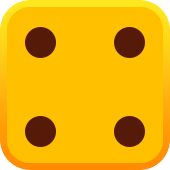












Roulette blends fixed structure with quick decisions, and success starts with clarity. This guide explains the wheel, the layout, and every wager you’ll meet at a real table or on a screen. You’ll see how payouts connect to risk, how variants shift the edge, and how live dealing differs from software-driven play. Short checklists, clean tables, and plain math keep the focus on results. Read once, practice a few rounds, and act with purpose.
Roulette uses a numbered wheel, a ball, and a felt layout where chips are placed before each spin. The aim is to predict where the ball will land, choosing narrow or broad coverage. Payouts are proportional to probability, so fewer numbers mean higher returns and greater variance. These are simple roulette rules that apply across most tables and apps.
Your objective is to forecast the winning pocket and place chips on matching positions. You may protect bankroll with broad coverage or pursue larger wins with precise picks. Table minimums and maximums define how many units you may stake per area. This framing makes roulette rules for beginners easy to follow.
A croupier or motor starts the wheel spin process, then the ball is released in the opposite direction. The ball slows, hits deflectors, and settles into a numbered, colored pocket. European and French wheels have one zero; American wheels have zero and double zero. The landing pocket determines winners; all other bets lose unless a special rule applies.
Chips must be placed within the announced betting time; late bets are refused. The dealer signals “no more bets,” and any movement stops until results are paid. After the payout, the board opens again for fresh chips. Clear gestures and chip placement prevent disputes.
The felt shows numbers 0–36 (and 00 where used) plus areas for broader wagers. Inside fields target exact numbers and small groups; outside fields target colors, parity, dozens, and columns. Markings match the wheel’s numbering but are arranged as a grid for fast chip placement. Understanding the layout accelerates decisions and reduces errors under the clock.
Inside areas cover single numbers or tight clusters for higher payouts and swingy results. Outside areas cover many numbers for lower payouts and steadier outcomes. Many players blend both to balance volatility and session length. Table limits sometimes differ for each zone, guiding stake size.
The grid presents 12 rows by 3 columns, with 0 (and 00) separate at the head. Zones include streets, corners, splits, and six-lines, plus columns and dozens. Colors and parity are marked for quick reference to number types like red/black and odd/even. Use this compact map to place chips with minimal movement.
|
Zone |
Covers |
Chip Placement |
Typical Payout |
|
Straight |
1 number |
On the number |
35:1 |
|
Split |
2 adjacent |
On the line between |
17:1 |
|
Street |
Row of 3 |
On row’s outer edge |
11:1 |
|
Corner |
Block of 4 |
At shared corner |
8:1 |
|
Six-Line |
6 numbers |
At row-edge junction |
5:1 |
|
Column/Dozen |
12 numbers |
In box label |
2:1 |
Wagers fall into two families: inside bets with higher returns and outside bets with broader coverage. Payouts reflect combinations covered versus total outcomes. Use a staking plan that matches risk tolerance and table caps. Learning basic roulette rules here helps track exposure.
A Straight covers one number at 35:1 and offers the sharpest swings. A Split covers two numbers at 17:1 and halves the precision requirement. A Street covers a row of three at 11:1 and suits incremental progression. A Corner covers four at 8:1 and moderates variance.
Red/Black and Odd/Even each cover 18 numbers but lose to zero. Dozen and Column cover 12 numbers at 2:1 and climb more smoothly than evens. Combining an even-chance bet with a Dozen can stretch bankroll without heavy complexity. Track exposure to avoid overlapping the same numbers unintentionally.
On single-zero layouts, the racetrack enables “call” or “announced” bets by wheel neighbors. Common patterns include Voisins du Zéro, Tiers du Cylindre, and Orphelins. These map to physical sectors rather than the felt grid, aiding wheel coverage. Ask the dealer for confirmation if limits or chip counts restrict a complex call. Explore the best slot online games available at Lucky Tiger Casino and enjoy high-quality gameplay.
|
Bet Name |
Wheel Sector |
Typical Coverage |
Notes |
|
Voisins du Zéro |
Around zero |
17 numbers |
Dense near 0 |
|
Tiers du Cylindre |
Opposite zero |
12 numbers |
Split-heavy |
|
Orphelins |
Two small arcs |
8 numbers |
Includes a straight |
Variant choice affects house edge, flow, and special rulings. European and French use one zero, cutting disadvantage versus American tables. French layouts add protective rules that return part or all of even-chance stakes on zero. Study European roulette rules if you want the leanest edge.
American wheels include 0 and 00, increasing outcomes and the edge. European wheels use one 0 and standard payouts with lower disadvantage. French tables add special protections on even-chance bets, improving retention. Choose by limits, speed, and local roulette rules casino practices.
|
Variant |
Zero Pockets |
Edge on Even-Chance |
Layout Notes |
|
American |
0 and 00 |
~5.26% |
38 pockets |
|
European |
0 |
~2.70% |
37 pockets |
|
French |
0 |
~1.35% with La Partage |
Racetrack used |
La Partage halves your even-chance loss when zero hits, returning half the stake. En Prison locks your even-chance chip for the next spin after zero. If the next result wins, the stake returns; if it loses, the stake is lost. These rules slow bankroll drain and sharpen session durability.
Live tables follow dealer pacing, chips, hand signals, and clear calls. Digital tables use interfaces, buttons, and timed windows for entry. Both forms follow the same core framework with minor procedural changes. Many platforms publish online roulette rules so players can confirm specifics.
Live studios post a countdown and close bets on the dealer’s call. UI panels show last results and limits; seat capacity may be shared. Compare table clocks to your pace and stay ahead of cutoffs. Dealers enforce windows strictly, so plan actions before closing.
Standard software uses certified generators to determine the landing result. Interfaces show chip stacks, history, and buttons for re-bet, double, and clear. Payouts match the felt tables and game regulations published by the operator. Many help centers link to online roulette rules for transparency. Before you play, make sure to read the terms on the bonus page so you know the wagering requirements.
Clear terms prevent mistakes and improve comparisons across venues. Wheel, ball, layout, and dealer actions define the flow end to end. Variants and extra rulings change outcomes only in narrow spots. Read house pages that restate roulette game rules in your jurisdiction.
The zero pocket is green and sits outside red/black parity groups. It causes even-chance bets to lose unless a special rule applies. It also anchors wheel sectors used in racetrack bets. Single-zero tables give players a lower disadvantage.
On single-zero tables, an even-chance bet may be held after zero. The chip is imprisoned and evaluated on the next spin. A win returns the stake; a loss forfeits it. This differs from La Partage, which refunds half immediately.
House edge is the average percentage retained by the venue over time. More zeros increase the edge because payouts stay constant while outcomes expand. Protective rules lower the edge on specific bets only. Understanding this metric informs table selection and stake size.



